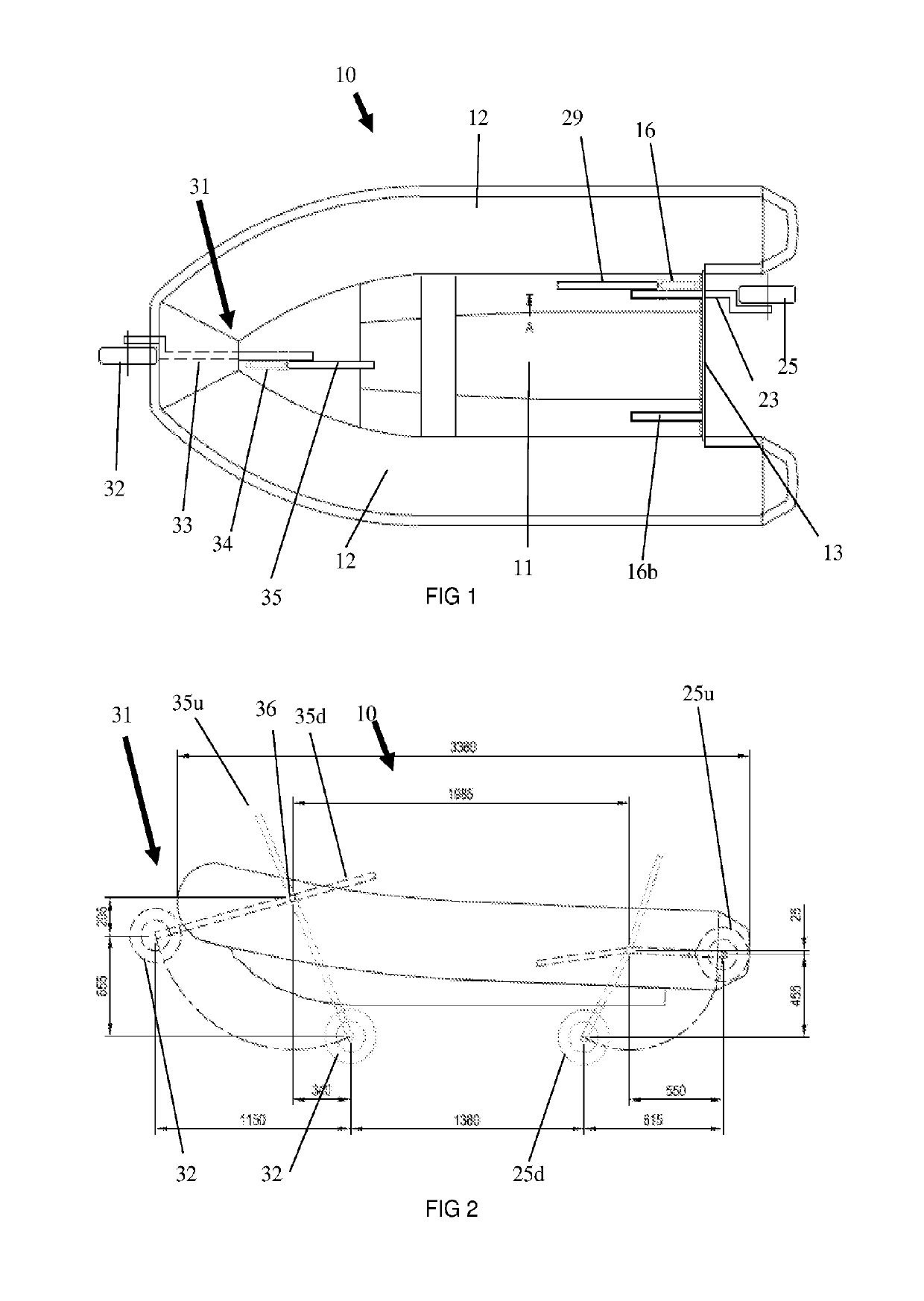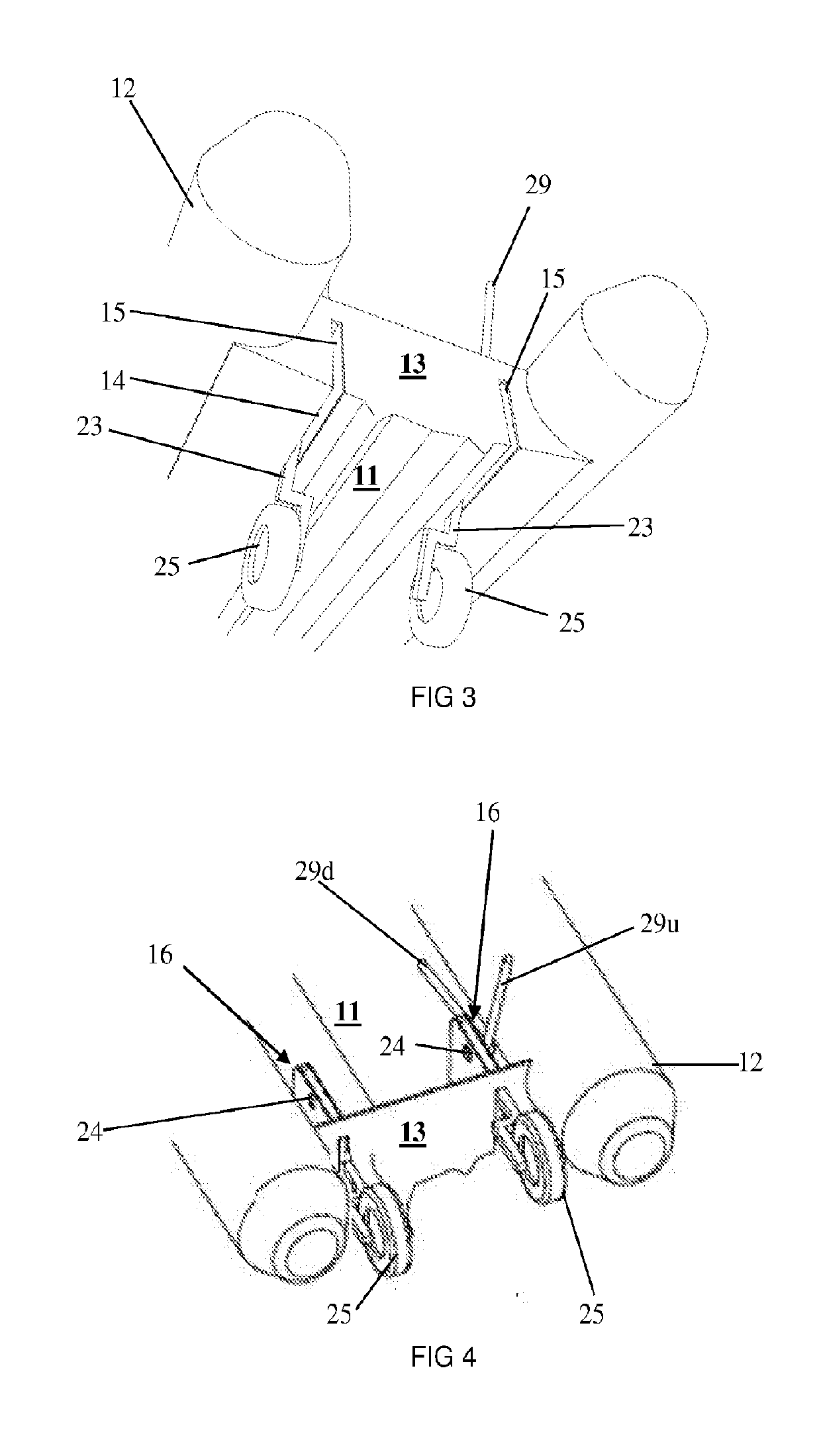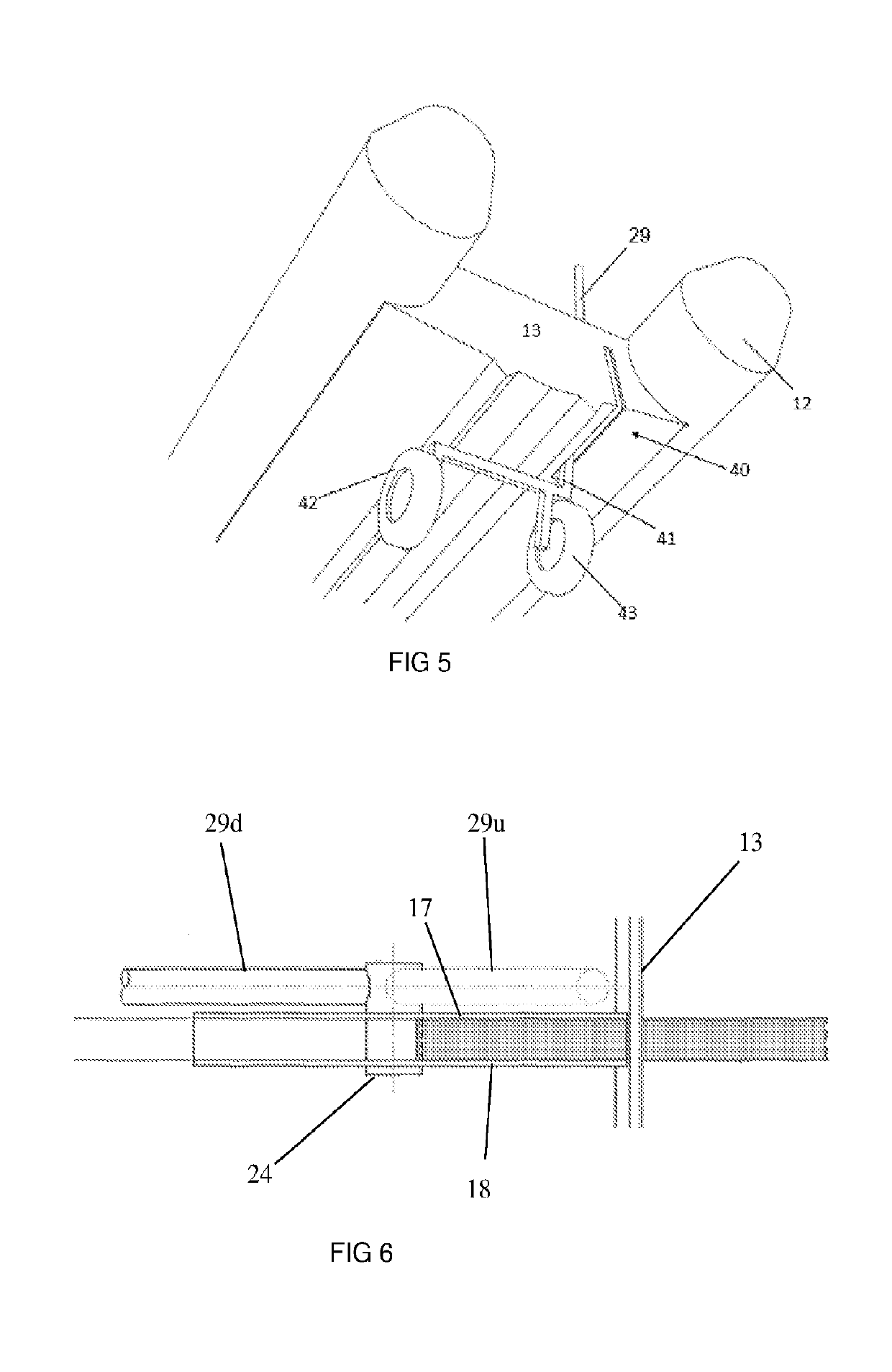Boat with Retractable Wheels
a technology of boat and wheel, which is applied in the field of boats, can solve the problems of trailer cost, loading and unloading the boat, and the trailer is not suited to soft sand or uneven surfaces, and may require a considerable amount of physical strength
- Summary
- Abstract
- Description
- Claims
- Application Information
AI Technical Summary
Benefits of technology
Problems solved by technology
Method used
Image
Examples
Embodiment Construction
[0098]The figures illustrate various embodiments of the invention. As will be seen, the primary differences between the various embodiments lie in the arc of travel of the wheels, or the particular design of the wheel assembly, and the means to operate the one or more arm members which control the extending and retracting of the wheels.
[0099]Referring initially to FIGS. 1 and 2, there is illustrated a watercraft which, in the particular embodiment, comprises a rigid inflatable boat (RIB) 10. These boats are lightweight and have a good performance and capacity and comprise a solid shaped hull 11 and two flexible tubes 12 at the gunwale. These boats also have a solid transom 13. Of course, although the particular embodiment is directed to a rigid inflatable boat, it is envisaged that the present invention is applicable to other types of boats as well.
[0100]FIGS. 3 and 4 are views of the rear of boat 10. It will be observed that a substantially L-shaped slot is formed in the hull and t...
PUM
 Login to View More
Login to View More Abstract
Description
Claims
Application Information
 Login to View More
Login to View More - R&D
- Intellectual Property
- Life Sciences
- Materials
- Tech Scout
- Unparalleled Data Quality
- Higher Quality Content
- 60% Fewer Hallucinations
Browse by: Latest US Patents, China's latest patents, Technical Efficacy Thesaurus, Application Domain, Technology Topic, Popular Technical Reports.
© 2025 PatSnap. All rights reserved.Legal|Privacy policy|Modern Slavery Act Transparency Statement|Sitemap|About US| Contact US: help@patsnap.com



